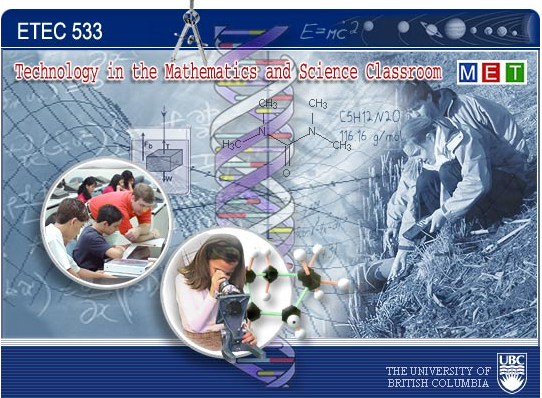Today, educators tasks increased a lot. At the same time that they are being asked to teach more content more effectively, science teachers are being asked to devote more time to having students engage in scientific practices. (Edelson, 2001) To be able to achieve the high demand they need tools to support the teaching and learning process. Traditional teachers perceive these demands as unachievable because they teach content and inquiry skills separately. Edelson (2001) points out that they view content learning activities and process learning activities as competing for the scarcest of classroom resources-time. For many reasons, digital technology forged itself a large place in the science teaching. It offers multiple opportunities to develop learners skills in the process. Data collection, data analysis, modeling and communication are a few of the practices reflected easily with the use of technology. These tools also « …offer benefits for learning in their ability to store and present information in dynamic and interactive formats. (Edelson, 2001) And finally, Edelson stated that the introduction of computers into schools presents an unprecedented opportunity for reform.
In Edelson’s (2001) article, the Learning for Use (LfU) model is presented as a valuable option to teaching science. He describes this model’s goal as to overcome the inert knowledge problem by describing how learning activities can foster useful conceptual understanding that will be available to the learner when it is relevant. This model is based on four principles « that are shared by many contemporary theories of learning (Edelson, 2001):
- Learning takes place through the construction and modification of knowledge structures.
- Knowledge construction is a goal-directed process that is guided by a combination of conscious and unconscious understanding goals.
- The circumstances in which knowledge is constructed and subsequently used determine its accessibility for future use.
- Knowledge must be constructed in a form that supports use before it can be applied.
This approach is based on the use of technology and offers a high volume of interest as it provides opportunities for learners to interact with technologies, it involves their interests. Edelson (2001) stated that for robust learning to occur, the learner must be motivated to learn the specific content or skills at hand based on a recognition of the usefulness of that content beyond the learning environment. Digital technologies does support that motivation in the experimentation.
From the four principles mentioned earlier, this model is based on the principles of the main theories of learning. The first principle is based on the main tenet of constructivism. The learner builds is new knowledge on the old one as a progression towards better understanding and making connections between knowledge structures. The second principle support the idea that learning must be initiated by the learner, pointed out Edelson (2001). In third, this principle claims is basis from the situated learning cognition theory where knowledge can be retieved based on contextual cues. And finally, the fourth principle captures the difference between declarative and procedural knowledge. (Edelson, 2001) For a learner to be able to make conclusions and connections between knowledge it needs to be able to operationalize its knowledge. It is a learned process acquired through experimentation.
By design, multiple pedagogical principles are reflected in the construction of the LfU model. The use of this model requires preparation and understanding of these principles from the teacher, if he wants it to be effective and stimulating for the learners.
Reference:
Edelson, D.C. (2001). Learning-for-use: A framework for the design of technology-supported inquiry activities. Journal of Research in Science Teaching,38(3), 355-385. Retrieved from http://ezproxy.library.ubc.ca/login?url=http://dx.doi.org/

